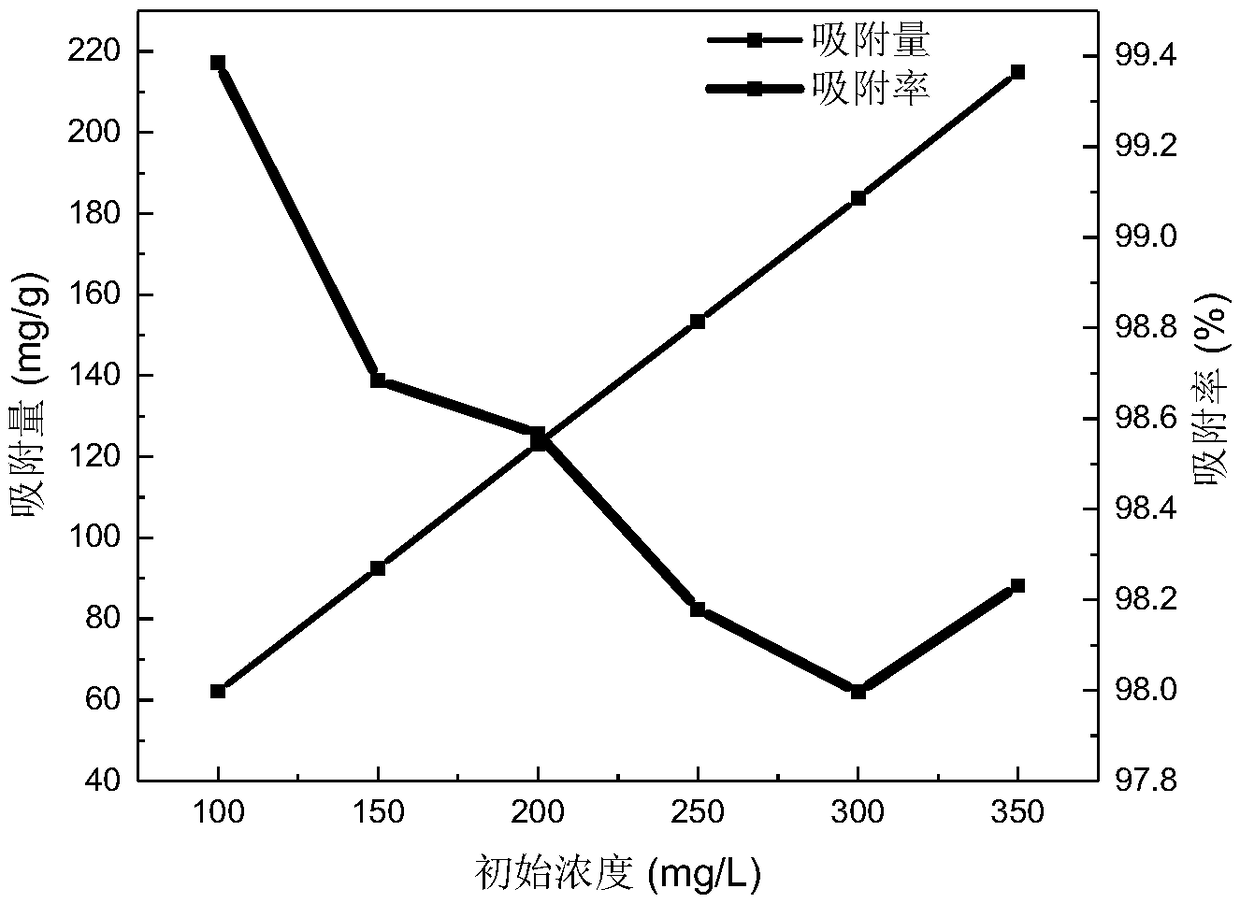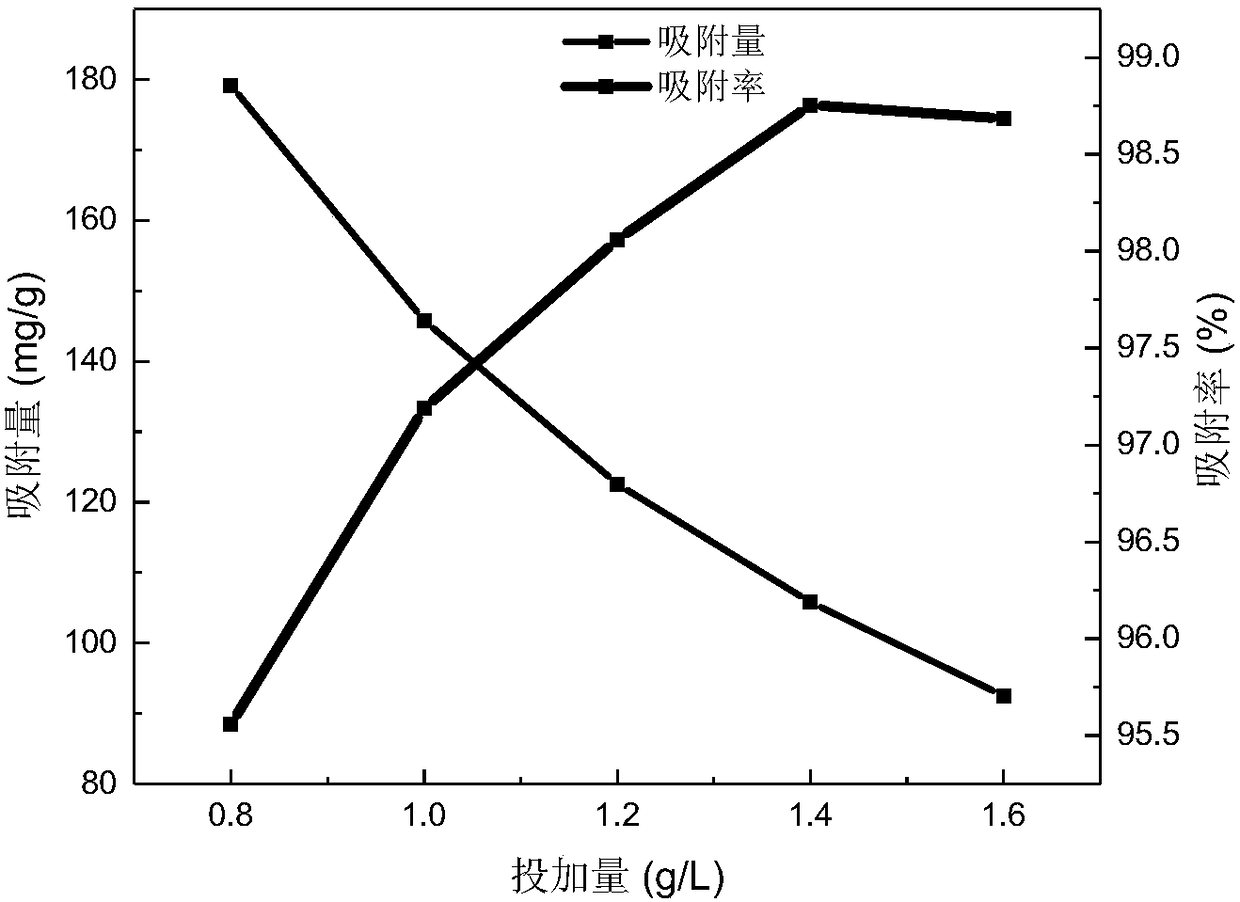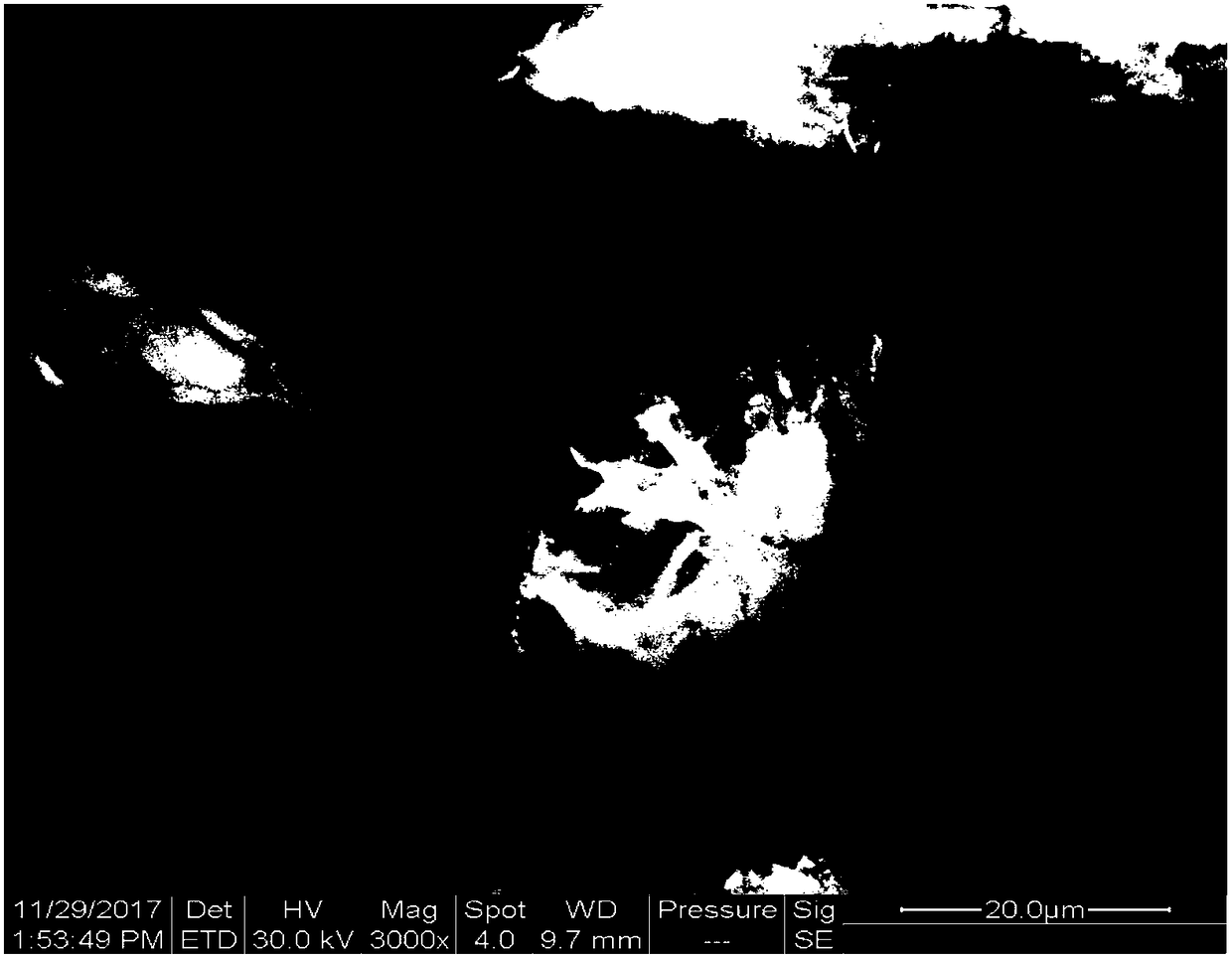Method for removal of crystal violet dye in water with water hyacinth based hydrothermal carbon adsorbent
A technology of hydrothermal charcoal and water hyacinth, which is applied in the direction of adsorption of water/sewage treatment, water pollutants, water/sewage treatment, etc. It can solve the problems of flooding water hyacinth, affecting the safety of drinking water for humans and animals, and costing huge sums of money. , to achieve the effect of realizing resource utilization, realizing water environment protection and reducing environmental load
- Summary
- Abstract
- Description
- Claims
- Application Information
AI Technical Summary
Problems solved by technology
Method used
Image
Examples
example 1
[0020] Example 1: Stir the water hyacinth into a muddy state, react at 200°C for 3 hours, take out the product and centrifuge to separate the solid from the liquid, wash it several times with water, take out the solid and dry it at 105°C for 24 hours to obtain No. 1 water hyacinth based hydrothermal carbon adsorbent.
[0021] Take No. 1 water hyacinth-based hydrothermal carbon adsorbent and add it to the crystal violet dye water with an initial concentration of 150mg / L. The dosage of the adsorbent is 0.8, 1.0, 1.2, 1.4, 1.6g / L respectively, that is, 25ml crystal violet solution Corresponding to 0.02, 0.025, 0.03, 0.035, 0.04g of adsorbent respectively, shake and adsorb at 20°C for 24 hours, and centrifuge to separate solid and liquid. Collect the liquid into the waste container for unified disposal.
[0022] The effect of adsorbent dosage on the removal of crystal violet is as follows: figure 1 shown.
example 2
[0023] Example 2: Stir the water hyacinth into a muddy state, react at 180°C for 5 hours, take out the product and centrifuge to separate the solid from the liquid, then wash it several times with water, take out the solid and dry it at 105°C for 24 hours to obtain No. 2 water hyacinth based hydrothermal carbon adsorbent.
[0024] Take No. 2 water hyacinth-based hydrothermal carbon adsorbent and add it to crystal violet dye water with an initial concentration of 100, 150, 200, 250, 300, and 350mg / L. The dosage of the adsorbent is 1.6g / L, that is, 25ml of crystal violet The solution corresponds to 0.04g of adsorbent, which is shaken and adsorbed at 15°C for 24 hours, and centrifuged to separate the solid from the liquid. Collect the liquid into the waste container for unified disposal.
[0025] The effect of the initial concentration of crystal violet on the removal effect of crystal violet is as follows: figure 2 shown.
example 3
[0026] Example 3: Stir the water hyacinth into a muddy state, react at 200°C for 4 hours, take out the product and centrifuge to separate the solid from the liquid, wash it several times with water, take out the solid and dry it at 105°C for 24 hours to obtain No. 3 water hyacinth based hydrothermal carbon adsorbent.
[0027] The scanning electron microscope picture of water hyacinth base hydrothermal carbon of the present embodiment is as follows image 3 It can be seen from the figure that the shape of water hyacinth biochar is similar to loose cotton-like flocs, and its surface is uneven, uneven, and very rough, which is conducive to the adsorption of pollutants by adsorbents.
PUM
| Property | Measurement | Unit |
|---|---|---|
| adsorption capacity | aaaaa | aaaaa |
Abstract
Description
Claims
Application Information
 Login to View More
Login to View More - R&D
- Intellectual Property
- Life Sciences
- Materials
- Tech Scout
- Unparalleled Data Quality
- Higher Quality Content
- 60% Fewer Hallucinations
Browse by: Latest US Patents, China's latest patents, Technical Efficacy Thesaurus, Application Domain, Technology Topic, Popular Technical Reports.
© 2025 PatSnap. All rights reserved.Legal|Privacy policy|Modern Slavery Act Transparency Statement|Sitemap|About US| Contact US: help@patsnap.com



